How to Choose the Perfect Sink and Vanity Unit
Table of Contents
-
The Ultimate Guide to Selecting the Perfect Sink and Vanity Unit—Find Out What You've Been Missing
-
Understanding Bathroom Sink Cabinets
-
Exploring Bathroom Sink Units
-
Factors to Be Considered While Choosing the Perfect Sink
-
Selecting the Perfect Bathroom Vanity
-
Types of Bathroom Vanity Units
-
Factors to be Considered While Choosing the Perfect Vanity
-
Choosing the Right Basin
-
Benefits of Integrated Basin and Vanity Units
-
Options for Integrated Sink and Vanity Units
-
Advantages of Bathroom Sink Units with Drawers
-
Organizing Tips for Maximizing Drawer Space
-
Conclusion
The Ultimate Guide to Selecting the Perfect Sink and Vanity Unit—Find Out What You've Been Missing
Choosing the right sink and vanity unit is crucial for both functionality and aesthetics in any bathroom. These fixtures play a central role in shaping the room's overall look and enhancing its usability. An ideal sink and vanity unit should harmonize with the bathroom’s design while addressing practical needs such as storage and convenience. With various styles, materials, and configurations available, making an informed choice can significantly influence the bathroom’s appearance and efficiency. Whether renovating or designing a new bathroom, understanding your options and how they fit your space is essential for achieving the perfect balance between style and functionality.
Understanding Bathroom Sink Cabinets
Bathroom sink cabinets come in various types, each offering different advantages. Traditional sink cabinets often feature a straightforward design with a focus on practicality. They provide essential storage beneath the sink, which is ideal for storing toiletries and cleaning supplies. More contemporary options include floating sink cabinets that offer a modern aesthetic and can make a bathroom feel more spacious by allowing more floor visibility. Additionally, there are modular cabinets that can be customized to fit specific needs or space constraints. When selecting a sink cabinet, consider factors like storage requirements, style preferences, and how well it complements the overall bathroom design.

Exploring Bathroom Sink Units
Basic Sink Units
Basic sink units offer a straightforward, functional solution for bathroom sinks. These units typically consist of a simple sink mounted onto a small cabinet or pedestal, focusing solely on providing the essential function of a sink. The design is minimalistic, which allows these units to blend seamlessly into various bathroom styles, from traditional to contemporary. They are particularly advantageous for smaller spaces or guest bathrooms where a basic setup suffices.
These units are often more affordable compared to more elaborate designs, making them a cost-effective choice for those with budget constraints. Their simplicity means they are generally easier to install, reducing both the time and labor required. However, the limited design and lack of additional features may be a drawback for those needing extra storage or counter space.
Despite their practical benefits, basic sink units often fall short in providing storage solutions. They typically feature minimal or no cabinetry, which can be a significant disadvantage in bathrooms where extra storage is needed. Additionally, the limited counter space around the sink might not accommodate all bathroom essentials, which could be inconvenient for users who require more surface area for daily items.
Pedestal Sink Units
Pedestal sink units are designed with a freestanding pedestal that supports the sink above it. This classic design is often chosen for its elegance and traditional appeal, making it a popular choice in vintage or period-style bathrooms. The pedestal is usually crafted from the same material as the sink, such as ceramic or porcelain, ensuring a cohesive and polished look. The open design of the pedestal also helps to visually enlarge a bathroom by making the space appear less cluttered.
One of the main advantages of pedestal sinks is their space-saving quality. By elevating the sink off the floor, they create a sense of openness in smaller bathrooms, making them feel more spacious. The open design also facilitates easier floor cleaning, as there are no cabinets or drawers obstructing access to the floor area.
However, pedestal sink units come with notable drawbacks. They provide no additional storage, which can be a significant limitation in bathrooms where storage is essential. Furthermore, the minimal counter space around the sink can be inconvenient, especially for users who need extra surface area for toiletries and other items. This design choice may require supplementary storage solutions elsewhere in the bathroom.
Vanity Sink Units
Vanity sink units integrate a sink with a cabinet, offering both functionality and storage. These units are highly versatile and come in a wide range of styles, from traditional to modern, allowing them to fit various bathroom aesthetics. The cabinet component often includes drawers, shelves, or a combination of both, providing ample space for storing toiletries, cleaning supplies, and other essentials. The surrounding counter space also allows users to keep daily items within easy reach, adding to the unit's practicality.
The primary benefit of vanity sink units is their ability to offer significant storage solutions. By incorporating both the sink and cabinetry into a single unit, they help to declutter the bathroom and keep essential items organized. The additional counter space around the sink is useful for placing items such as soap, hand towels, and decorative accessories, enhancing both functionality and style.
Despite their many advantages, vanity sink units can be cumbersome in smaller bathrooms where space is limited. Larger vanity units may make a small bathroom feel cramped, and their installation can be more complex compared to basic or pedestal sinks. Proper measurement and professional installation may be necessary to ensure a good fit and seamless integration with the bathroom's overall design.
Wall-Mounted Sink Units
Wall-mounted sink units are designed to be affixed directly to the wall, creating a floating appearance that can contribute to a modern and minimalist aesthetic. This design is particularly well-suited for contemporary bathrooms where clean lines and open spaces are desired. By removing the pedestal or cabinetry from the floor, wall-mounted sinks create a sense of spaciousness, making the bathroom appear larger and less cluttered.
One of the key benefits of wall-mounted sinks is their ease of cleaning. With no base or cabinet to navigate around, the floor area beneath the sink is fully accessible, allowing for more efficient and thorough cleaning. Additionally, wall-mounted sinks offer customizable installation heights, making it easier to accommodate different user needs and preferences.
However, wall-mounted sink units may present some challenges. They typically do not offer additional storage, which could be a disadvantage for those needing extra space for bathroom essentials. Proper installation is crucial, as the sink must be securely attached to the wall with adequate support. This often requires professional installation to ensure that the sink is properly supported and that all plumbing connections are correctly made.

Corner Sink Units
Corner sink units are specifically designed to fit into the corners of bathrooms, making them an excellent choice for optimizing space in compact or oddly shaped bathrooms. These units make use of otherwise wasted corner space, allowing for better utilization of the available area. The unique design not only maximizes the functional space but also adds a distinctive look to the bathroom, often serving as a design focal point.
The primary advantage of corner sink units is their ability to make small bathrooms feel more open and accessible. By utilizing corner spaces effectively, they free up central areas for other uses, contributing to a more organized and spacious feel. The design can also add a unique and stylish element to the bathroom, differentiating it from more traditional sink setups.
However, corner sinks can present some challenges. The design may offer limited counter space around the sink, which could be inconvenient for users who need more surface area for toiletries or decorative items. Additionally, installing a corner sink may require precise measurements and adjustments to ensure a proper fit and alignment with the plumbing. This complexity might necessitate professional assistance for accurate installation.
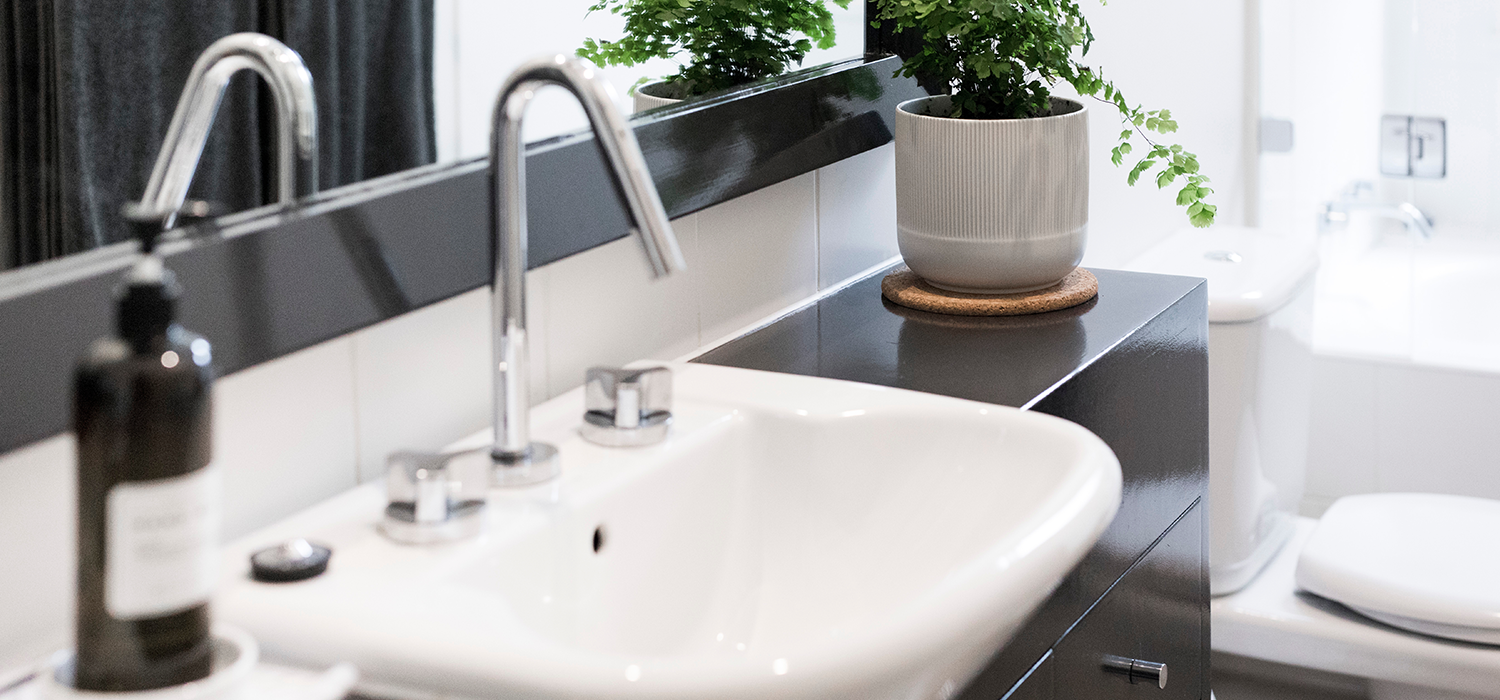
Factors to Be Considered While Choosing the Perfect Sink
Selecting the right sink is crucial in both functional and aesthetic terms for any bathroom or kitchen. Here’s a detailed exploration of the key factors to consider:
1. Size and Proportion
The size and proportion of a sink relative to your space are fundamental to ensuring both usability and design harmony. In a smaller bathroom or kitchen, a compact sink is essential for maximizing space. It prevents the area from feeling cramped and helps maintain an open, airy environment. For instance, a small pedestal sink can provide necessary functionality without overwhelming limited space. Conversely, in larger bathrooms or kitchens, a more substantial sink can serve as a central feature that complements the scale of the room. A large, deep sink in a spacious kitchen can facilitate a variety of tasks, from washing large pots to cleaning vegetables, while maintaining a balanced look in the room.
Proper measurement is crucial; you need to account for the sink's footprint and ensure it fits well within the available countertop or cabinet space. It's important to leave adequate clearance around the sink for faucet installation and user comfort. A sink that is too large for the space can dominate the room, making it look disproportionate, while a sink that's too small might seem insignificant and inadequate for the tasks at hand.

2. Sink Material
The material of a sink affects not only its durability and maintenance needs but also its appearance. Common materials include:
- Ceramic: Ceramic sinks are a popular choice for their classic look and ease of cleaning. They are typically resistant to stains and scratches, making them a good choice for high-use areas. However, they can chip if heavy objects are dropped. The smooth, glossy surface of ceramic sinks can also complement a wide range of bathroom and kitchen designs, from traditional to contemporary.
- Stainless Steel: Known for its modern aesthetic and exceptional durability, stainless steel is resistant to stains, heat, and corrosion. This material is highly practical for busy kitchens where durability is a priority. Stainless steel sinks are easy to clean but can show water spots and fingerprints, which may require regular wiping to maintain their sleek appearance.
- Granite Composite: Combining the toughness of granite with the ease of maintenance, granite composite sinks resist scratches, stains, and heat while offering a range of colors and finishes. They provide a sophisticated look and durability, making them suitable for both modern and classic interiors. The material is also relatively easy to clean, although it can be more expensive compared to other options.
- Glass: Glass sinks add a contemporary, elegant touch to any bathroom. They are often chosen for their visual appeal and unique design. However, they can be prone to scratching and may require more regular cleaning to maintain their clarity. The transparent nature of glass can create a stunning focal point but might not be as practical in high-use environments.
Choosing the right material involves balancing aesthetic preferences with practical considerations like how often the sink will be used and the level of maintenance you’re willing to undertake.
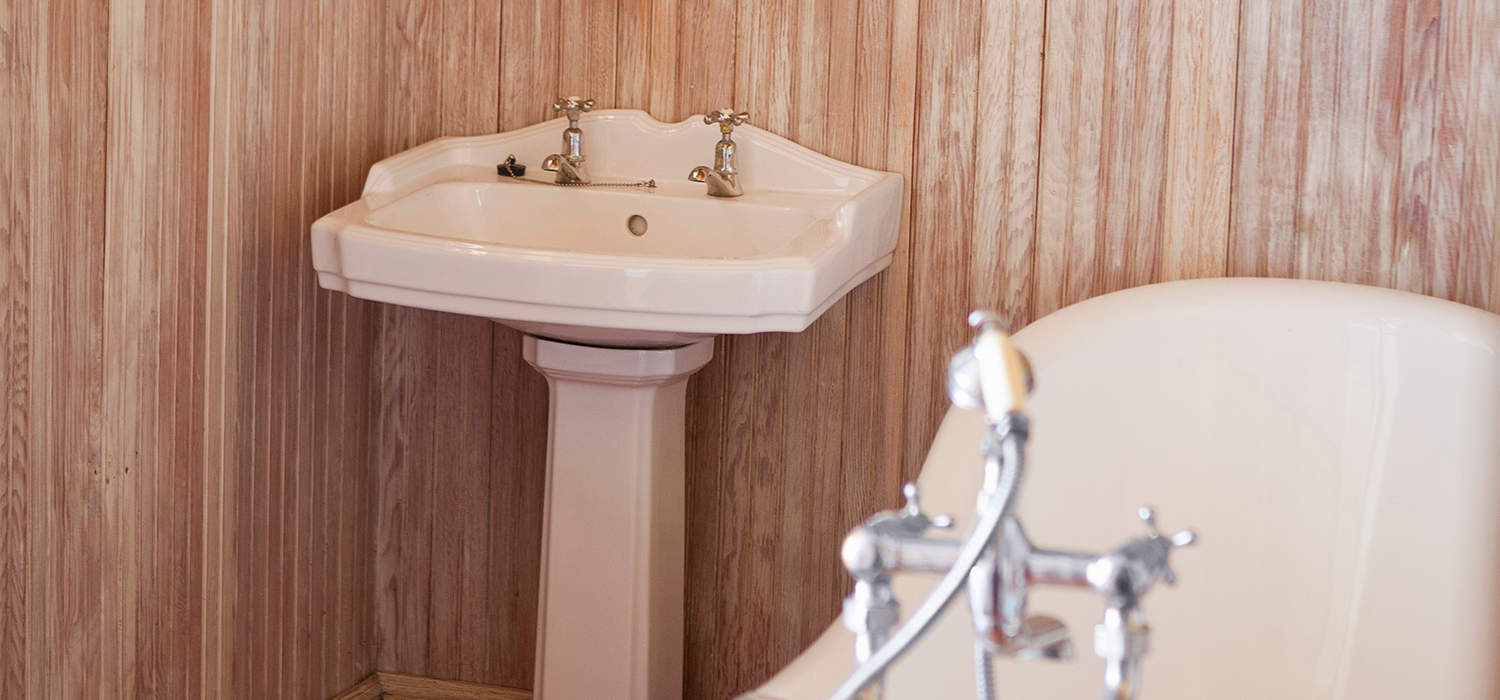
3. Style and Design
The style and design of the sink should harmonize with your overall decor. Different sink styles cater to various aesthetic preferences:
- Undermount Sinks: Installed beneath the countertop, these sinks offer a sleek, modern look with no visible edges around the sink. They make countertop cleaning easier as there is no lip to catch debris. However, they often require professional installation and can be more expensive to install and replace.
- Drop-In Sinks: Also known as top-mount sinks, these are installed with a visible rim that rests on the countertop. They are generally easier and more cost-effective to install, making them suitable for DIY projects. The visible rim, however, may create a challenge for cleaning around the sink.
- Pedestal Sinks: These sinks stand on a freestanding base and are ideal for traditional bathrooms. They offer a classic look but provide limited countertop space and storage. Pedestal sinks are suitable for small bathrooms where space is at a premium.
- Vessel Sinks: These sit on top of the countertop, creating a dramatic effect and adding a touch of sophistication. They come in various shapes and sizes, offering flexibility in design. However, vessel sinks require careful consideration of faucet height and placement, as well as adjustments in countertop height for comfortable use.
Selecting a style that complements the existing design of your bathroom or kitchen ensures a cohesive and aesthetically pleasing look.
4. Budget Considerations
Budget is a critical factor in selecting a sink, as prices can vary widely based on material, size, and design. High-end materials and intricate designs may offer additional benefits but come at a higher cost. Consider not only the initial purchase price but also long-term costs, including installation and maintenance. While premium options might offer enhanced durability and aesthetics, there are often cost-effective alternatives that can still meet your needs effectively. Balancing cost with desired features ensures a practical investment that aligns with your budget and overall design goals.
5. Space and Storage
When choosing a sink, consider how it integrates with your space and storage needs. In kitchens, sink cabinets often offer additional storage underneath, which is valuable for keeping cleaning supplies and kitchen tools organized. Bathroom sinks with integrated vanities can provide extra space for toiletries and towels. Ensure that the sink and its cabinet or vanity unit fit well within your available space, maximizing both functionality and storage capacity. For smaller bathrooms or kitchens, opt for compact designs that offer smart storage solutions without sacrificing functionality. Efficient use of space ensures that your sink area remains clutter-free and practical.
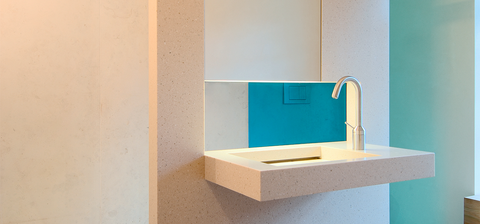
Selecting the Perfect Bathroom Vanity
Choosing the perfect bathroom vanity involves careful consideration of several factors, from space planning to fixture integration. Start by assessing the size and layout of your bathroom to determine the appropriate dimensions and configuration for the vanity unit. Consider how the vanity will integrate with existing fixtures, such as sinks and faucets, and ensure that all components work together seamlessly. Pay attention to materials and finishes to ensure they complement the overall bathroom design. Finally, evaluate storage needs and functionality to ensure the vanity meets practical requirements while enhancing the bathroom’s aesthetic appeal. A well-chosen vanity can significantly impact both the look and functionality of the bathroom.
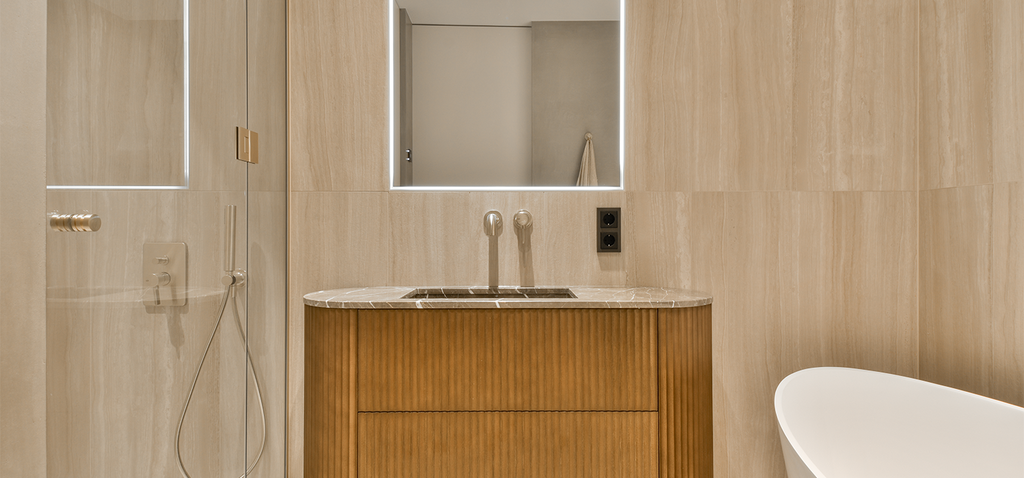
Types of Bathroom Vanity Units
Bathroom vanity units are integral to bathroom design, blending functionality with aesthetics. They come in various forms, each offering distinct benefits and considerations. Here's a detailed exploration of different types of bathroom vanity units:
1. Freestanding Vanities
Freestanding vanities are a traditional choice for many bathrooms, characterized by their standalone design. They rest on the floor and are supported by legs or a base, creating a classic look that fits various interior styles. The primary advantage of freestanding vanities is their ease of installation. They do not require significant modifications to existing plumbing, making them a popular choice for both new installations and renovations. The variety in design—from ornate to minimalist—ensures that there is a freestanding vanity to suit virtually any bathroom decor.
In terms of functionality, freestanding vanities offer ample storage options. Many models come with cabinets and drawers, providing plenty of space for toiletries, cleaning supplies, and other bathroom essentials. This makes them ideal for families or individuals who require significant storage space. Additionally, the flexibility in design allows homeowners to select a vanity that complements their overall bathroom theme, whether it’s modern, rustic, or somewhere in between.
However, freestanding vanities do have some drawbacks. One major consideration is their footprint; they occupy valuable floor space, which can be an issue in smaller bathrooms where space is at a premium. Additionally, the area underneath the vanity can be challenging to clean, as dust and debris can accumulate. Despite these limitations, freestanding vanities remain a popular choice due to their traditional appeal and practicality.
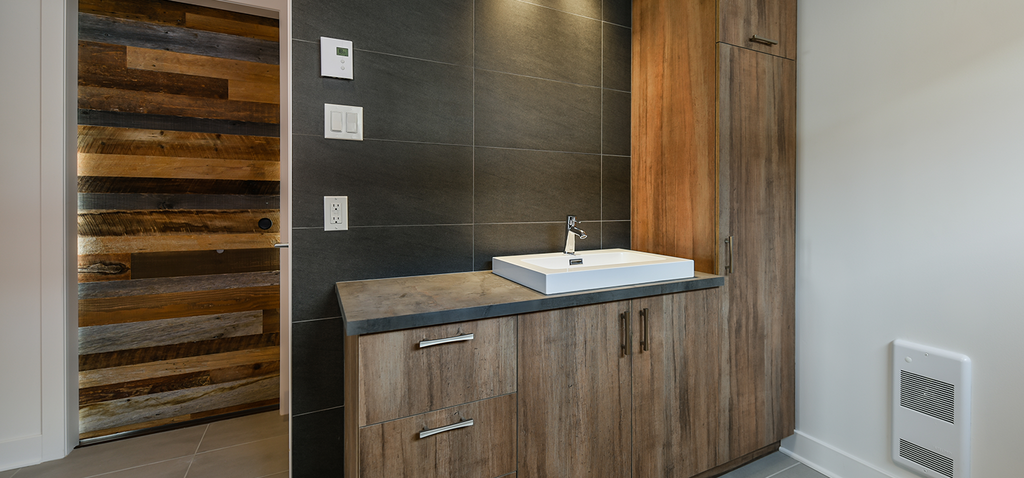
2. Wall-Mounted Vanities
Wall-mounted vanities, also known as floating vanities, are mounted directly to the wall, creating a sleek and modern look. This design leaves the floor beneath the vanity clear, which can make a small bathroom appear larger and more open. Wall-mounted vanities are particularly popular in contemporary bathrooms where a minimalist aesthetic is desired. The floating design also makes cleaning easier, as there are no legs or bases to navigate around.
One of the significant benefits of wall-mounted vanities is their ability to maximize floor space, which is particularly advantageous in compact bathrooms. By lifting the vanity off the ground, the open space below contributes to a feeling of spaciousness, which is a valuable trait in smaller areas. Additionally, this design often makes it easier to clean the floor around the vanity, promoting better hygiene and less maintenance work.
However, wall-mounted vanities require a strong wall structure to support their weight, which can make installation more complex and potentially necessitate professional help. The reduced floor space also means there might be less storage available compared to freestanding units. This type of vanity might not suit every bathroom layout or design preference, but it is an excellent option for modern spaces seeking a contemporary look and feel.
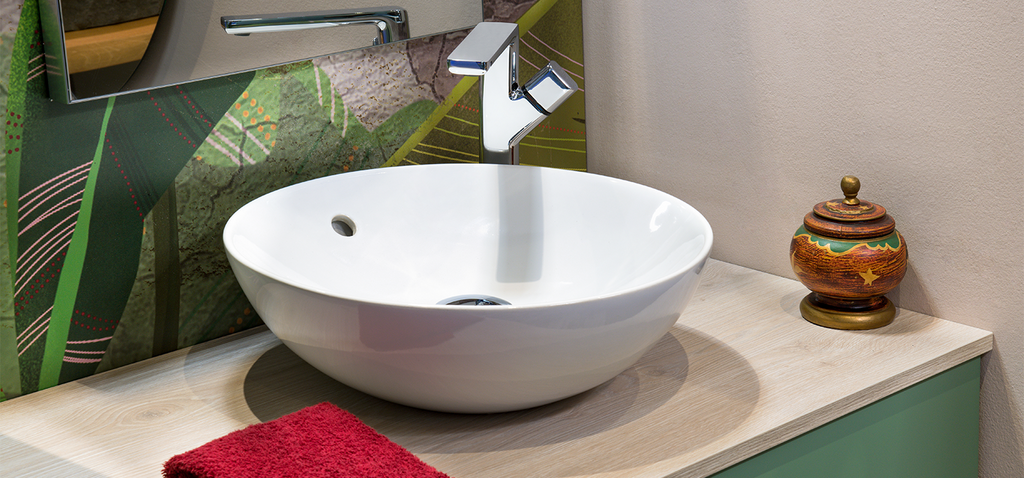
3. Corner Vanities
Corner vanities are designed to fit into the corner of a bathroom, making them a practical choice for maximizing the use of available space. This type of vanity is especially useful in small or awkwardly shaped bathrooms where traditional layouts might not fit. By utilizing the corner space, these vanities can free up other areas of the bathroom, allowing for more efficient use of the overall space.
The main advantage of corner vanities is their space-saving capability. They are ideal for bathrooms where every inch counts, allowing for efficient use of underutilized corner spaces. This makes them a practical solution for compact bathrooms or powder rooms where a traditional vanity might overwhelm the space. Many corner vanities come in both wall-mounted and freestanding designs, offering flexibility in installation and style.
On the downside, corner vanities may present some challenges. The design can sometimes limit counter space and storage, as the shape of the unit is constrained by the corner placement. Additionally, accessing the sink and storage areas may be less convenient compared to other vanity types. Despite these potential drawbacks, corner vanities are a valuable option for making the most out of limited bathroom space.
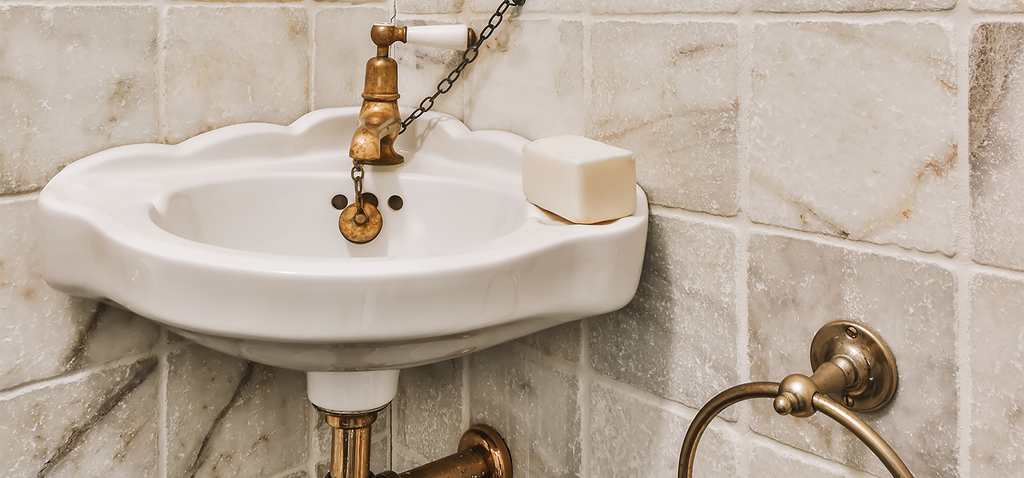
4. Integrated Vanity Units
Integrated vanity units combine the sink and vanity into a single, cohesive piece, providing a streamlined and modern appearance. This design ensures a seamless look with minimal seams, which contributes to a clean and contemporary aesthetic. Integrated units are available in various styles, allowing homeowners to choose one that fits their bathroom’s design while providing efficient use of space.
The key benefit of integrated vanity units is their unified design, which simplifies the appearance of the bathroom. The integration of sink and storage into one piece reduces the number of joints and seams, which can make cleaning easier and prevent grime accumulation. Additionally, integrated units often include built-in storage solutions, maximizing space efficiency and providing a tidy, organized look.
However, integrated vanity units can have limitations in terms of customization. The sink and vanity are designed as a single unit, which means there are fewer options for altering the sink or vanity separately. This can limit flexibility if you want to update or replace parts of the unit in the future. Furthermore, precise installation is necessary to ensure a perfect fit, which may require professional assistance. Despite these considerations, integrated vanity units offer a sleek and practical solution for modern bathrooms.
5. Double Sink Vanities
Double sink vanities feature two separate sink areas within the same unit, making them ideal for bathrooms shared by multiple users. This design allows two people to use the sink simultaneously, which can be a significant advantage in busy households. Double sink vanities are available in various styles and sizes to accommodate different bathroom layouts and needs.
One of the major benefits of double sink vanities is the convenience they offer. They facilitate simultaneous use, reducing wait times and improving efficiency in the morning routine. Additionally, they provide ample counter space, which is useful for placing toiletries and other items. This type of vanity is particularly suited for master bathrooms or larger family bathrooms where multiple users require access to sinks.
Despite these advantages, double sink vanities require more space than single sink options, which may not be suitable for smaller bathrooms. The increased size can also lead to higher costs and potentially more complex installation requirements. Nonetheless, for larger bathrooms, the added convenience and functionality of double sink vanities can greatly enhance the overall user experience.
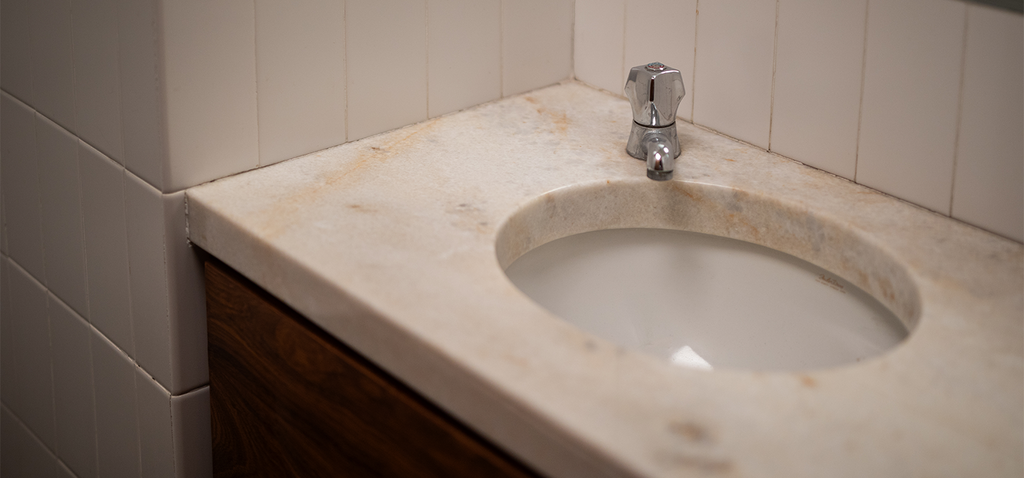
6. Modular Vanities
Modular vanities are customizable units made up of separate pieces that can be arranged and configured in various ways. This flexibility allows homeowners to design a vanity that perfectly fits their space and storage needs. Modular units can be mixed and matched to create a bespoke solution, making them ideal for those seeking a tailored approach to their bathroom design.
The primary advantage of modular vanities is their adaptability. Homeowners can choose different components—such as sinks, cabinets, and drawers—and arrange them according to their specific requirements. This customization ensures that the vanity unit meets the unique needs of the bathroom and can be easily adjusted or expanded as those needs change. Modular vanities are available in various styles and finishes, allowing for a high degree of personalization.
However, modular vanities can be more complex to design and install compared to pre-assembled units. The process of selecting and configuring individual components may require careful planning and potentially professional assistance. Additionally, modular units can be more expensive due to their customizable nature. Despite these challenges, the flexibility and personalization offered by modular vanities make them a compelling choice for many homeowners.
7. Pedestal Vanities
Pedestal vanities are characterized by a pedestal base that supports the sink, offering a traditional and elegant appearance. This design is often chosen for its classic look and ability to complement vintage or traditional bathroom styles. Pedestal vanities provide a sense of openness and can make a bathroom feel more spacious due to their slender, upright design.
One of the main benefits of pedestal vanities is their aesthetic appeal. They offer a timeless look that can enhance the charm of a traditional or vintage bathroom. The open design beneath the sink contributes to a more open and airy feel, which can be particularly advantageous in smaller bathrooms. Pedestal vanities are often chosen for their simplicity and elegance, making them a favorite in classic bathroom designs.
However, pedestal vanities have some limitations. The design typically includes little to no storage space, which may not meet the needs of households requiring additional storage. The pedestal base can also present cleaning challenges, as it may be harder to clean around compared to other vanity designs. Despite these drawbacks, pedestal vanities remain a popular choice for those seeking a classic and refined bathroom look.
Factors to be Considered While Choosing the Perfect Vanity
1. Size and Proportion
When selecting a vanity, size and proportion are critical to achieving a balanced and functional bathroom layout. First, measure your bathroom's dimensions, including the length, width, and height of the space where the vanity will be installed. This helps in selecting a vanity that fits well without crowding the room. For smaller bathrooms, opt for compact vanities that utilize vertical space, such as those with built-in shelves or wall-mounted designs. Floating vanities are an excellent choice for small spaces as they free up floor area, creating a sense of openness.
Conversely, larger bathrooms can accommodate more substantial vanities with features such as double sinks, expansive countertops, and additional storage compartments. In larger spaces, you have the flexibility to choose a vanity with a broader design, including units that offer extensive counter space and multiple drawers. Ensuring the vanity is proportionate to the bathroom size helps maintain a harmonious design and functional flow, preventing the space from feeling cramped or unbalanced.
2. Storage Needs
Storage capacity is a vital consideration when selecting a vanity, as it directly impacts the functionality and organization of your bathroom. Evaluate how much storage you need for everyday items like toiletries, cleaning supplies, and personal belongings. Vanities with built-in drawers and cabinets offer organized storage solutions, making it easier to keep your bathroom tidy. For instance, drawers can be used to store smaller items such as cosmetics and grooming tools, while cabinets can hold larger items like extra towels or toilet paper.
For bathrooms with limited space, choose vanities with smart storage solutions like open shelves or built-in organizers to maximize available space. Consider modular vanities with adjustable shelves or pull-out drawers that provide flexibility for changing storage needs. In larger bathrooms, you might opt for a vanity with a combination of drawers, cabinets, and perhaps even a separate storage area for items like cleaning supplies. Proper storage helps maintain an orderly and functional bathroom environment, improving daily usability and accessibility.
3. Style and Design
The style and design of the vanity should harmonize with the overall aesthetics of your bathroom. Start by considering the existing design elements, such as the color palette, flooring, and other fixtures. For a modern bathroom, you might choose a vanity with clean lines, minimalist features, and contemporary finishes such as high-gloss lacquer or metal accents. In contrast, a traditional bathroom might benefit from a vanity with classic details like carved wood, antique finishes, and ornate hardware.
Additionally, the type of vanity can influence the room’s overall design. Wall-mounted vanities offer a sleek, floating appearance ideal for modern or minimalist bathrooms. Freestanding vanities can add a touch of traditional elegance or rustic charm, depending on their design. Integrated vanities with built-in basins provide a streamlined look and can be particularly effective in smaller spaces where maximizing functionality is essential. Ensuring that the vanity’s style complements the rest of the bathroom creates a cohesive and visually appealing space.
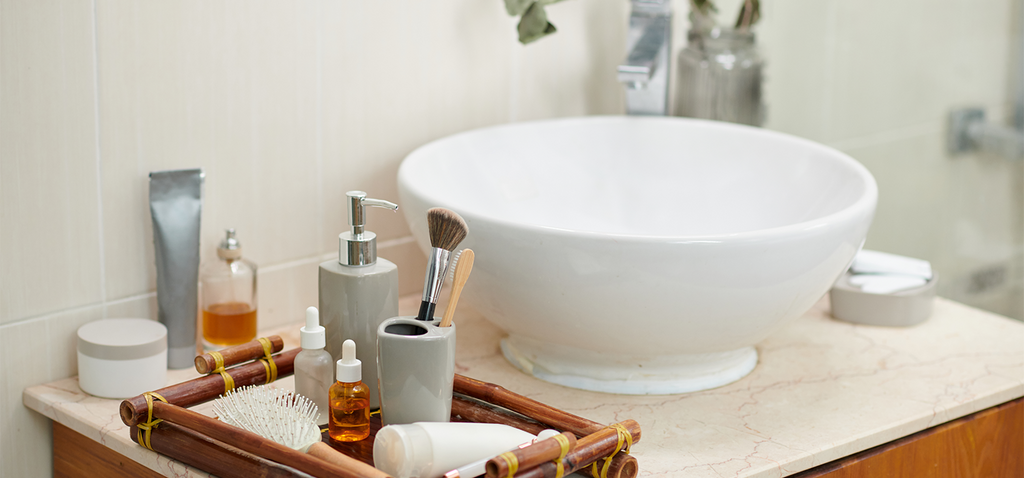
4. Material and Durability
The materials used for the vanity significantly impact its durability, appearance, and maintenance requirements. Common materials include wood, laminate, metal, glass, and stone. Wood vanities offer a warm, classic look but require proper sealing and maintenance to resist water damage and wear. High-quality hardwoods like oak or maple are durable and long-lasting but may come at a higher price.
Laminate vanities are cost-effective and come in various finishes and colors but may not be as durable as natural materials. Metal vanities, often crafted from stainless steel or aluminum, provide a modern and robust solution that can withstand moisture and heavy use. Glass and stone vanities, such as those made from granite or marble, offer a luxurious look but require regular maintenance to prevent stains and scratches. Choosing a material that aligns with your bathroom’s usage patterns and maintenance preferences ensures longevity and sustained aesthetic appeal.
5. Sink Options
The type of sink integrated with the vanity affects both its functionality and visual appeal. Sink options include undermount, top-mount, and vessel sinks, each with distinct features. Undermount sinks are installed below the vanity countertop, creating a seamless look that makes cleaning the counter easier as there is no lip to catch debris. This type of sink is ideal for a sleek, modern design.
Top-mount sinks, or drop-in sinks, are set into a hole in the countertop, with the rim resting on the surface. They are easier to install and maintain but may not offer the same clean lines as undermount options. Vessel sinks sit on top of the vanity counter and can serve as a bold design statement. They provide an opportunity to showcase unique designs or materials but may require a taller vanity to accommodate their height. Choosing the right sink type based on your design preferences and practical needs ensures both functionality and aesthetic appeal.
6. Installation and Plumbing
Installation and plumbing considerations are essential to ensure the vanity fits well and functions correctly. Some vanities, especially those with complex features like double sinks or integrated basins, may require more extensive plumbing adjustments. Ensure that the vanity you choose aligns with your existing plumbing setup or be prepared for potential modifications. Floating vanities may need additional wall support, which could involve reinforcing the wall or securing the unit with appropriate hardware.
Freestanding vanities are generally simpler to install but still require careful alignment with existing plumbing fixtures. Evaluate whether you will handle the installation yourself or if you need to hire a professional plumber, as this can impact both cost and installation time. Proper installation ensures that the vanity functions correctly and integrates seamlessly with your bathroom’s plumbing system, preventing issues such as leaks or improper water flow.
7. Budget
Budget is a significant factor in selecting a vanity, influencing both the choice of materials and the features you can afford. Determine your budget early in the process and prioritize essential features while considering potential upgrades. Vanities come in a wide range of prices depending on size, material, and design complexity. Higher-end options may offer premium materials, custom designs, and additional features but can be more expensive.
Affordable options are available that still provide good quality and functionality, such as laminate vanities or pre-assembled units. Keep in mind the long-term value of your investment, including the durability and maintenance costs associated with different materials. Setting a clear budget helps narrow down your choices and ensures you find a vanity that meets your needs without exceeding your financial limits.
Choosing the Right Basin
Selecting the right basin for your bathroom is crucial to ensuring that it not only complements the vanity unit but also meets your practical needs and design preferences. The basin should be chosen based on several key factors:
Size and Shape: The size and shape of the basin should harmonize with the size of the vanity unit and the overall bathroom design. For smaller bathrooms, a compact basin can maximize counter space and avoid crowding. Conversely, larger bathrooms can accommodate more substantial basins, such as those with double sinks. The shape of the basin—whether round, oval, rectangular, or square—can also impact the bathroom's aesthetic. Rectangular or square basins often lend a modern, geometric look, while round or oval basins can add a touch of softness and classic elegance.

Material: The material of the basin affects both its durability and maintenance. Common materials include ceramic, glass, stone, and metal. Ceramic basins are popular for their smooth finish and ease of cleaning. Glass basins offer a sleek, contemporary look but may require more frequent cleaning to maintain their appearance. Stone basins, such as those made from marble or granite, provide a luxurious feel and exceptional durability, but they may require periodic sealing to prevent stains. Metal basins, often made from stainless steel, offer a modern, industrial look and are highly durable but may show water spots and fingerprints more readily.
Installation Type: The installation type of the basin can also impact its functionality and aesthetic. Basins can be mounted on top of the vanity, undermounted for a seamless look, or integrated into the vanity unit for a unified design. Over-mount or drop-in basins are easier to install and can be ideal for DIY projects, while undermounted basins provide a sleek appearance and easier countertop cleaning. Integrated basins, where the sink and vanity unit are one piece, offer a streamlined look and can simplify both installation and maintenance.
Functionality and Practical Needs: Consider the daily usage of the basin and any specific requirements you may have. For instance, if you often wash large items or need extra counter space, a larger basin with an extended counter may be beneficial. If multiple users will be using the bathroom, a double basin might be more practical. Additionally, features such as built-in overflow or splash guards can enhance functionality and help prevent water damage.
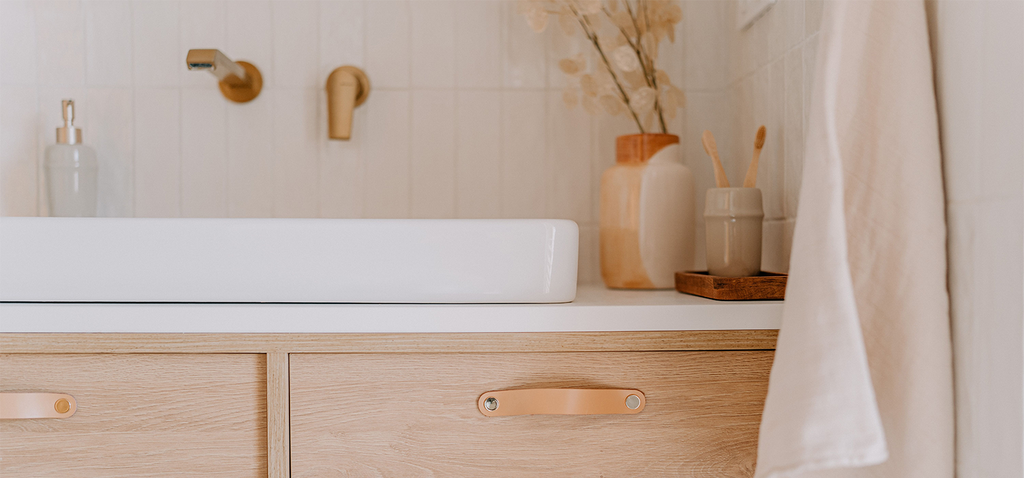
Benefits of Integrated Basin and Vanity Units
Integrated basin and vanity units offer several advantages, making them a popular choice for modern bathrooms. Here’s why they might be the right option for you:
Streamlined Design: One of the most significant benefits of integrated basin and vanity units is their seamless, streamlined appearance. These units combine the sink and storage into a single piece, eliminating the need for separate components and creating a cohesive, clean look. This integration reduces visible seams and gaps, contributing to a more polished and sophisticated bathroom design.
Simplified Installation: Integrated units simplify the installation process by combining the sink and vanity into one component. This can reduce installation time and complexity, as there are fewer separate pieces to fit together. Additionally, integrated units often come pre-assembled, which can further ease the installation process. This makes them a convenient choice for both professional installers and DIY enthusiasts.
Enhanced Cleaning: With fewer seams and gaps, integrated units are generally easier to clean. The absence of separate sink and vanity components means there are fewer areas where dirt and grime can accumulate. This can make routine cleaning more straightforward and help maintain a hygienic bathroom environment.
Built-In Storage: Many integrated units include built-in storage solutions, such as drawers or cabinets. This added functionality helps in organizing bathroom essentials and keeping the space clutter-free. The storage compartments are often designed to maximize space and provide easy access to toiletries and other items.
Design Flexibility: Integrated units come in various styles, sizes, and finishes, allowing you to choose a design that fits your bathroom’s aesthetics. Whether you prefer a minimalist modern look or a more traditional design, there are integrated options available to suit different preferences. This flexibility in design helps ensure that the unit complements your overall bathroom decor.
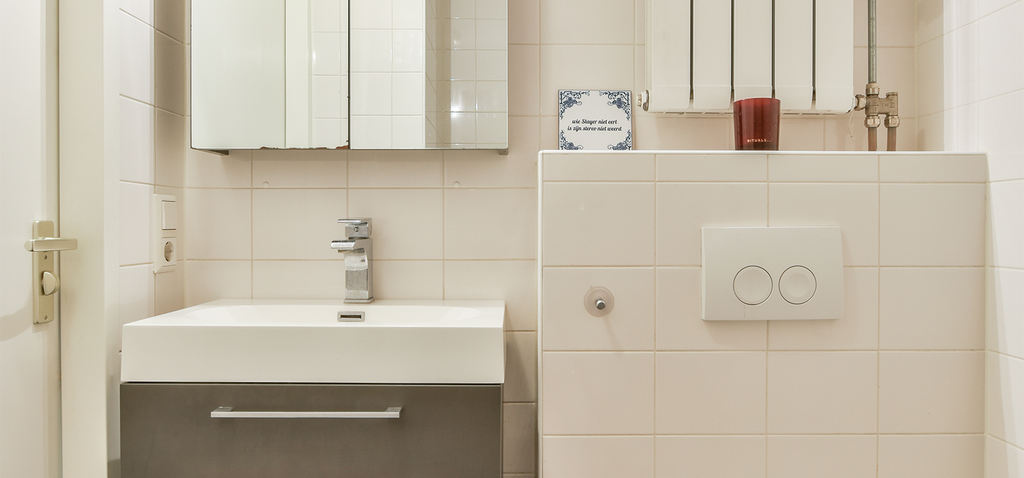
Options for Integrated Sink and Vanity Units
When considering integrated sink and vanity units, you have several options to choose from, each offering different features and benefits:
Design Styles: Integrated units are available in a range of styles, from contemporary to traditional. Modern units often feature sleek, geometric lines and minimalist designs, while traditional options may include more ornate detailing and classic finishes. Choosing a design style that aligns with your bathroom’s overall aesthetic is essential for achieving a cohesive look.
Materials: The materials used for integrated units can vary, including options like ceramic, glass, stone, and various types of wood. Ceramic and glass units are known for their smooth, polished finishes and ease of maintenance. Stone units, such as those made from granite or marble, offer durability and a luxurious appearance. Wood units can provide warmth and character but may require additional maintenance to protect against moisture.
Sizes and Configurations: Integrated units come in various sizes and configurations to fit different bathroom spaces. For small bathrooms, compact units that combine a small basin with storage can help maximize space. Larger bathrooms can accommodate more extensive units with double sinks or additional counter space. Customizable options are also available, allowing you to tailor the unit to your specific needs and dimensions.
Features: Consider the additional features that integrated units may offer. Some units come with built-in lighting, mirrors, or adjustable shelving, which can enhance functionality and convenience. Features like soft-close drawers, built-in towel racks, or under-sink lighting can add extra comfort and usability to your bathroom setup.
Installation Options: Integrated units can be designed for various installation methods, including wall-mounted or floor-mounted configurations. Wall-mounted units are ideal for creating a floating effect and can make a bathroom feel more spacious. Floor-mounted units provide a more traditional look and offer additional support for larger or heavier designs.
By exploring these options, you can find an integrated sink and vanity unit that not only meets your practical needs but also enhances the overall design and functionality of your bathroom.
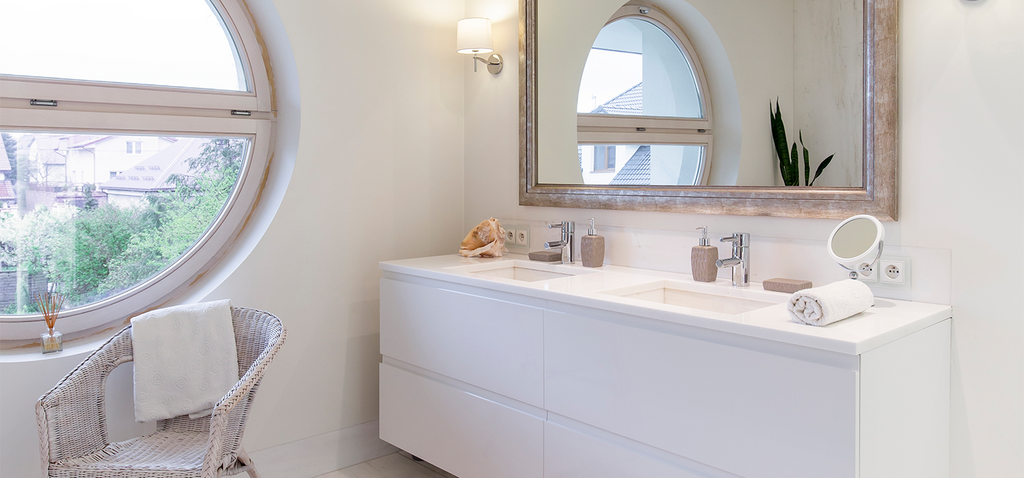
Advantages of Bathroom Sink Units with Drawers
Bathroom sink units with drawers provide several practical benefits, making them an excellent choice for many bathroom designs. Here’s a detailed look at their advantages:
1. Enhanced Storage Solutions
Sink units with drawers offer significant storage advantages by providing multiple compartments for organizing bathroom essentials. Unlike traditional cabinets with doors, drawers allow for easy access to items stored at the back without having to reach over or move other items. This accessibility is particularly useful for storing toiletries, cleaning supplies, and personal items. The ability to pull out drawers means you can utilize the entire depth of the unit, maximizing the storage space and keeping everything neatly organized.
In addition to standard drawers, some units come with specialized drawers designed for specific items such as hairdryers, straighteners, or makeup products. These custom drawers enhance organization and ensure that everything has its place, reducing clutter and making it easier to find what you need.
2. Better Organization and Accessibility
Drawers inherently offer better organization compared to open shelves or cabinets with doors. They enable a more systematic approach to storing items, with the possibility to use drawer dividers or inserts to further organize small items. For instance, using dividers in drawers can help separate different types of toiletries or cleaning supplies, making it easier to locate specific items quickly.
Accessibility is another major advantage. Instead of having to bend down or kneel to access items in lower cabinets, drawers allow you to pull out the storage space to eye level. This feature is especially beneficial for people with mobility issues or those who simply prefer a more ergonomic design. The smooth glide of well-designed drawers also makes accessing and retrieving items more convenient and less cumbersome.
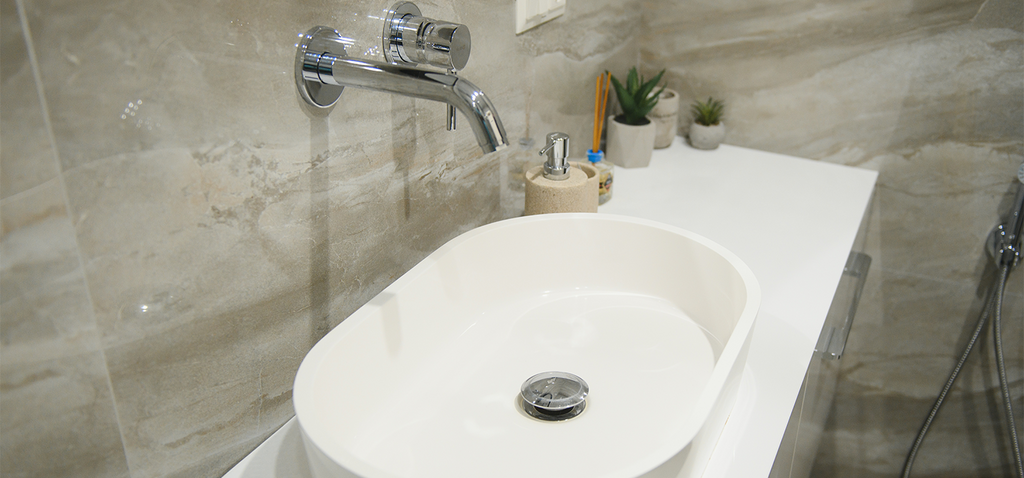
3. Reduced Clutter and Improved Aesthetics
Using drawers in your bathroom sink unit can significantly reduce visual clutter. By providing concealed storage, drawers help keep personal items out of sight, contributing to a cleaner and more streamlined appearance. This not only enhances the overall look of the bathroom but also creates a more relaxing environment by minimizing visual distractions.
Aesthetically, bathroom sink units with drawers offer a modern and sleek appearance. The absence of traditional cabinet doors allows for a more uniform and polished look. Many units are designed with minimalist lines and high-quality finishes that complement contemporary bathroom decor. This design choice can elevate the bathroom’s visual appeal and create a cohesive and sophisticated space.
4. Customization and Flexibility
Sink units with drawers often come in various configurations, offering flexibility to meet different needs and preferences. For example, you can choose units with a mix of drawer sizes to accommodate both small and large items, or opt for units with built-in features such as trash pull-outs or recycling bins.
Customization options extend to materials, finishes, and hardware as well. Many manufacturers offer choices that allow you to match the sink unit with other bathroom fixtures and design elements, ensuring that it seamlessly integrates into the overall bathroom aesthetic. This level of customization ensures that the unit not only meets practical needs but also enhances the bathroom’s design.
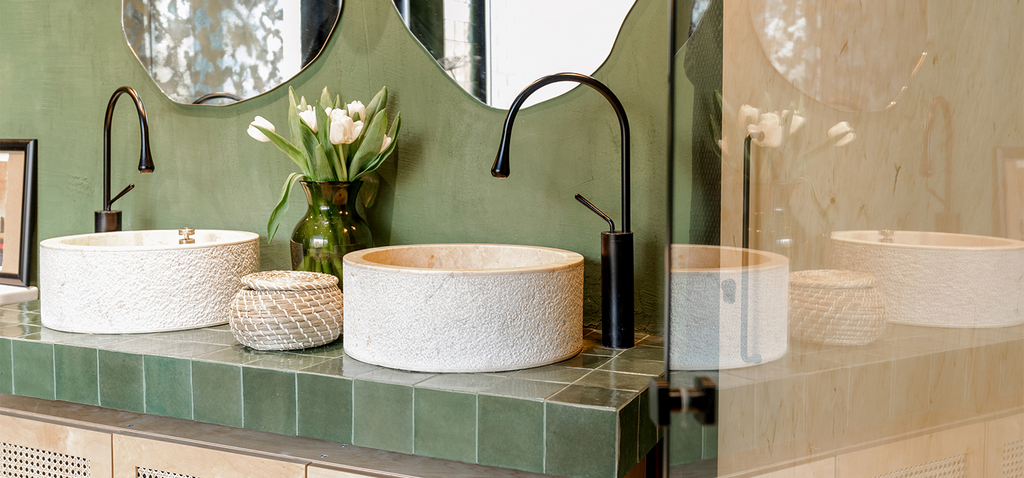
Organizing Tips for Maximizing Drawer Space
Effectively organizing drawer space in your bathroom sink unit can enhance functionality and efficiency. Here are some detailed tips for making the most of your drawer space:
1. Use Drawer Dividers and Organizers
Drawer dividers and organizers are essential tools for maintaining order and maximizing space in bathroom drawers. These dividers can be adjusted or customized to fit the specific dimensions of your drawer and can help separate various items such as toiletries, cosmetics, and cleaning supplies. By creating distinct sections within the drawer, you can keep items neatly arranged and easily accessible.
Consider using expandable drawer organizers for flexibility, allowing you to adjust the compartments as your storage needs change. This adaptability ensures that the organizers continue to work effectively even as your collection of items evolves. For smaller items, such as makeup brushes or hairpins, use small containers or trays within the drawer to keep everything in place and prevent clutter.
2. Implement Vertical Storage Solutions
Vertical storage solutions, such as stackable trays or tiered racks, can significantly increase drawer capacity. These solutions make use of the vertical space within the drawer, allowing you to store more items without taking up additional horizontal space. For example, a tiered organizer can hold multiple layers of cosmetics or toiletries, while a stackable tray can accommodate extra items without requiring a larger drawer.
Vertical storage is particularly useful for items like hair tools or cleaning supplies, which can often be stored in a more organized manner when arranged vertically. This approach not only maximizes space but also makes it easier to find and access items without having to dig through a cluttered drawer.
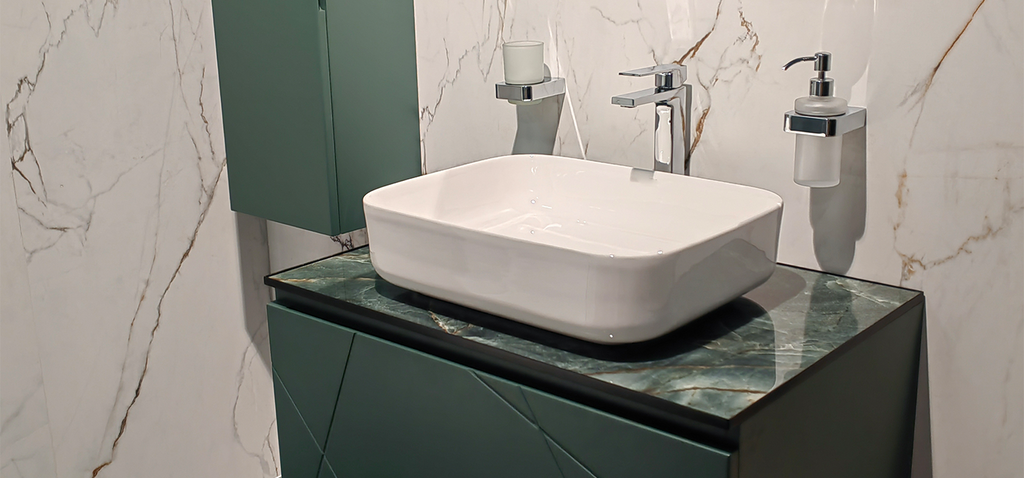
3. Label and Categorize
Labeling drawers or using clear containers helps in categorizing and identifying items quickly. By clearly marking what each drawer or container holds, you can avoid the confusion of searching through multiple compartments. This system is particularly beneficial in busy households where multiple people use the same bathroom.
Labeling can be done with adhesive labels or using pre-made label holders. For containers, opt for clear options to allow easy visibility of the contents. Categorize items based on their usage or frequency, placing frequently used items towards the front of the drawer and less commonly used items towards the back. This organization method streamlines the process of finding and retrieving items, enhancing overall convenience.
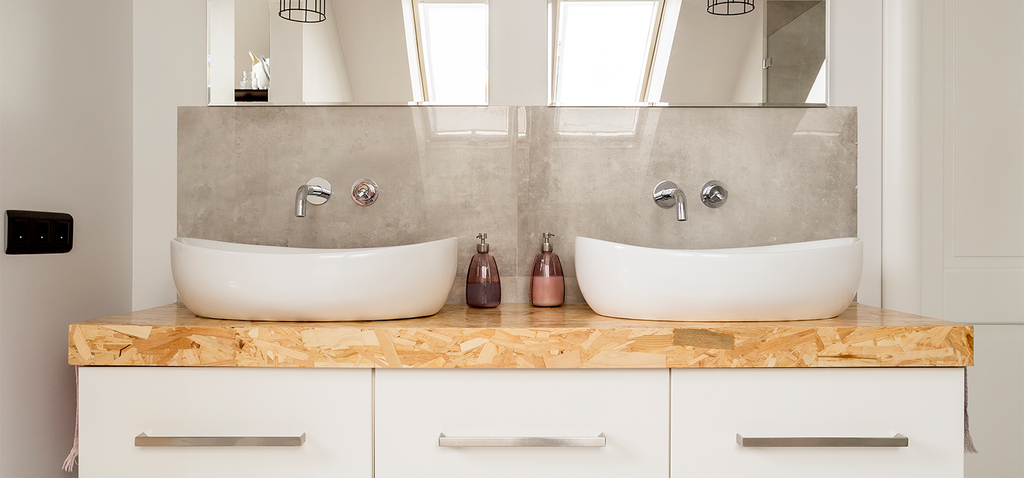
4. Keep Frequently Used Items Accessible
Place frequently used items in the most accessible drawers to improve efficiency and ease of use. For example, everyday toiletries such as toothpaste, hand soap, and face wash should be stored in the top or most reachable drawers. This placement minimizes the need to open multiple drawers to find commonly used items, reducing frustration and saving time.
Consider using small containers or caddies within the drawer to group related items together. This approach not only keeps frequently used items organized but also ensures that they remain easily accessible. By prioritizing accessibility for high-use items, you can create a more functional and user-friendly bathroom space.
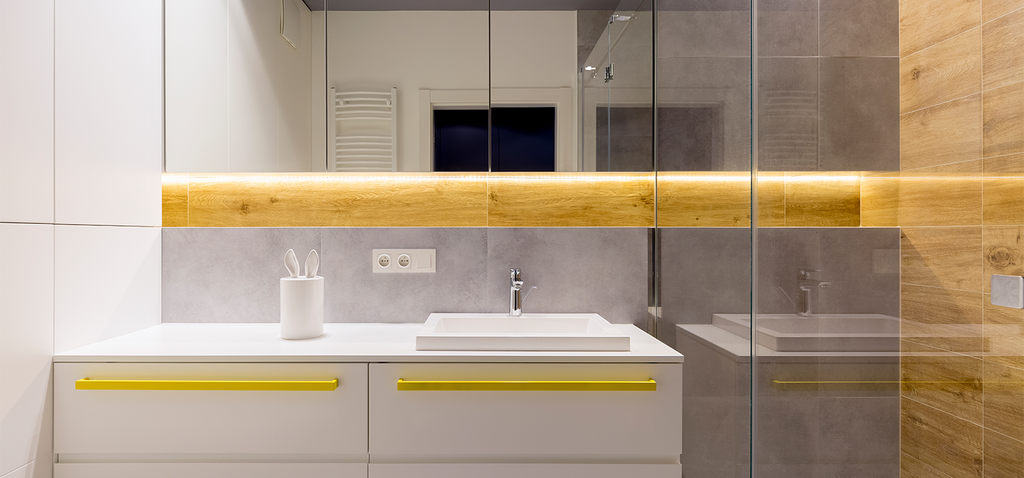
5. Regularly Reevaluate and Declutter
Regularly reevaluating and decluttering your drawer contents helps maintain organization and prevents clutter buildup. Periodically review the items stored in your drawers and remove any that are expired, broken, or no longer needed. This routine maintenance ensures that your drawer space remains functional and that only necessary items are kept.
During decluttering, take the opportunity to reorganize and adjust the layout of your drawer organizers. As your needs and preferences change, your drawer organization system may need updates to stay effective. By keeping your drawer contents and organization system up to date, you can ensure that your bathroom remains organized and efficient.
Conclusion
Choosing the perfect sink and vanity unit involves balancing style, functionality, and space considerations. By understanding the various options available, from different types of sink cabinets and vanity units to materials and design features, you can make an informed decision that enhances your bathroom’s overall look and efficiency. Consider factors such as storage needs, space constraints, and design preferences to find a sink and vanity unit that suits your specific requirements. Ultimately, the right choice will not only improve the functionality of your bathroom but also contribute to its aesthetic appeal, creating a space that is both practical and stylish.
Explore our basin vanity unit collection here
Look into basins collection here
Other related blogs:








![City 800 unit Wall Mounted with Internal Draw, Sensor Bottom Light White City 800 unit Wall Mounted with Internal Draw, Sensor Bottom Light White [CYWM803W+P800BS]](http://tapron.co.uk/cdn/shop/products/Mirror-and-white-vanity-unit_533x.jpg?v=1657868191)
![Freestanding Grey Gloss Bathroom Vanity Unit with Basin Isla Floor Standing Vanity Unit with Deep Ceramic Basin in Glossy Grey Finish [TRIS600FSG]](http://tapron.co.uk/cdn/shop/products/Isla-Floor-Standing-Vanity-Unit-with-Deep-Ceramic-Basin-in-Glossy-Grey-Finish-_TRIS600FSG_533x.jpg?v=1643283181)
![Mirror with Heated Pad Touch Switch [GL500] Bathroom Mirror with Led Light-Tapron](http://tapron.co.uk/cdn/shop/products/Bath_Mirror_Tapron_533x.jpg?v=1658830360)




![Bathroom Wall-Mounted Vanity Cabinet with Basin and Two Drawers-Grey Bathroom Wall-Mounted Unit with Basin and Two Drawers-White [PWM604GR + P600BS]](http://tapron.co.uk/cdn/shop/products/grey-wall-mounted-vanity-unit-with-two-doors-and-basin_533x.jpg?v=1657474215)
















































